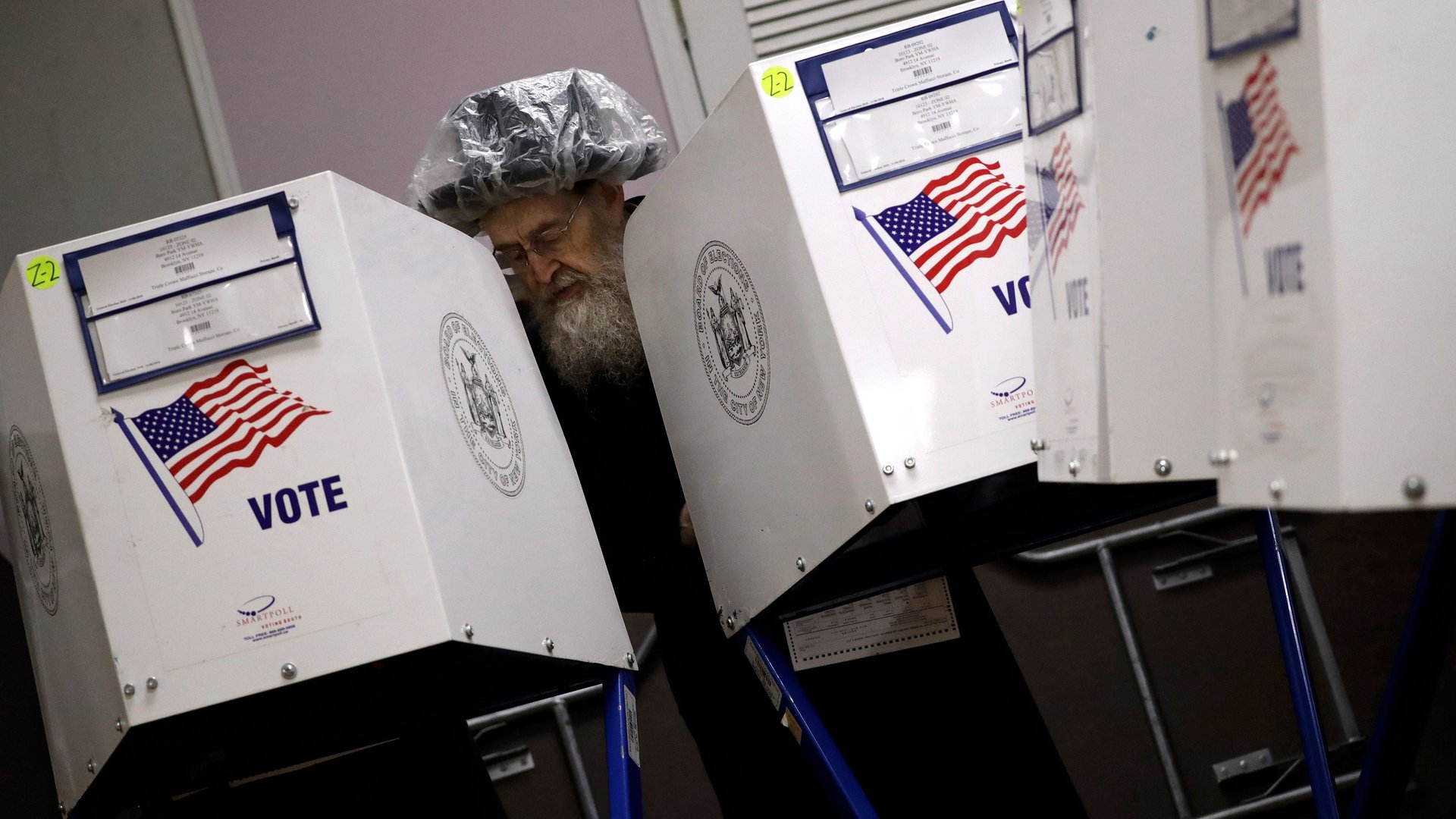The US midterms feature a major standoff between voting machines and the weather
Americans voting in this year’s midterm elections face a range of obstacles, from long lines to concerns over voter suppression. Some US citizens are also dealing with more unexpected challenges around exercising their right to vote—for instance, the weather.


Americans voting in this year’s midterm elections face a range of obstacles, from long lines to concerns over voter suppression. Some US citizens are also dealing with more unexpected challenges around exercising their right to vote—for instance, the weather.
Across Georgia, heavy rain is an added hurdle for voters, though it’s not altogether deterring them. And humidity—a far less visible weather issue—is having an even larger impact. North Carolina’s State Board of Election (SBOE) reports that some precincts in Wake County are having trouble feeding ballots through the voting machines. “Initial reports from county elections offices indicate this issue is caused by high humidity levels,” North Carolina’s SBOE said in a release.
What’s with the humidity?
Why is a little extra water vapor in the air making such a big difference? Joseph Lorenzo Hall, chief technologist with the Washington, DC-based nonprofit Center for Democracy and Technology (CDT) and an election technology and cybersecurity expert, explains that ballots are made of a thick stock paper, the specifics of which are determined by voting machine vendors. There are three main makers of voting machines in the US. Local election officials have to work with paper vendors to get paper supplies that will function correctly with the machines and have safety requirements such as watermarks.
For added safety, the machines will only tolerate small variations in the paper specifics. And the paper will only withstand certain weather conditions. For instance, machines produced by Election System & Software only work properly with up to 50% relative humidity. This is because the paper thickens in high humidity conditions, and can end up jammed up in the machine.
But unlike a copier, Hall explains, clearing up these jams is not a simple matter of opening up the machine. To avoid hacking and tampering, machines are sealed. Removing the seal counts as tampering with election results, so poll workers have instructions not to do so in an attempt to fix the machines.
Vote dust
Meanwhile, New York City has seen an uptick of long lines and delays, which may also have to do with the weather. Several reports say that long lines in the city were caused by jammed machines.
The Board of Elections (BOE) blamed the lines on a combination of factors, including higher turnout and a two-page ballot. But here, too, the weather is a concern: People getting into the polls with wet clothes may inadvertently be getting the ballot wet.
“The drier, the crisper the ballot is, the less issues you’re gonna have with the machine” says Michael Ryan, the New York City’s BOE director. Reports collected by ProPublica’s Electionland project, which monitors voting problems around the country, show what seemed to be “an unusual amount of reports of scanner malfunctions in the five boroughs,” says Hall. “If there is one thing that links them it appears to be paper jams, potentially caused by dust and small pieces of paper from the ballot perforations.” Combined with humidity or a wet ballot, paper particles may end up forming a kind of paste that jams the machines.
Paper stuck, now what?
North Carolina’s SBOE said in its statement that ”[w]hen ballots cannot be read by tabulators, they are stored securely in ’emergency bins’ and will be tabulated as soon as possible.” A similar solution appeared to be afoot at a polling place in the Mount Hope section of the Bronx, New York City. Karen A. Edwards, the site’s lead coordinator, told people waiting in line that “we only have one machine working right now, so you have a choice, you can wait on this line or you can use the ballot boxes and they will be counted later by a coordinator.”
Waiting for votes to be counted later can create a volume problem. Boxes begin to fill up, and poll workers have to find reasonably safe ways to collect and secure people’s votes. Their options can be rather creative—including ad-hoc solutions such as fishing tackle boxes with locks and duct tape, says Hall. Or, as a coordinator of another Bronx polling station said, “I could ask the principal for a large garbage can and put them in there.”
Once the polls close, the votes collected get passed through high-capacity scanners; in some cases, they may be manually counted. Ultimately, this won’t have dramatic consequences—other than a delay in assessing the unofficial results.
Aimee Rinehart at IDLab, Spenser Mestel at ProPublica, Orla McCaffrey, and Gabriel Sandoval contributed to the reporting for this piece.
This story started as a tip from ProPublica’s Electionland project, which monitors voting problems around the country. If you had trouble voting, or if you saw something you want to tell us about, here’s how.
Correction: A previous version of the story placed the voter machines issue in South Carolina instead of North Carolina.